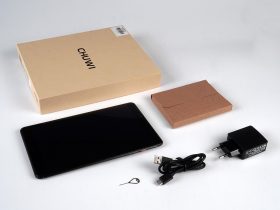No products in the cart.

POCO has put on the table its most ambitious mobile to date. The POCO F4 GT is the European version of the Xiaomi Redmi K50 Gaming Edition, so we are facing the first purely gaming mobile from POCO. A display of power, physical triggers, and technologies aimed at the user spending a few hours playing.
We have already been able to test this POCO F4 GT, so we will tell you what our first impressions are of this phone. We anticipate that the F4 GT is not technically a successor to the POCO F3 but a gaming mobile that competes with firms such as Nubia or BlackShark.
A great panel to play anywhere.
The POCO F4 GT debuts a 6.67-inch panel with AMOLED technology and a non-adaptive 120Hz refresh rate. It is compatible with HDR10 +, although not with Dolby Vision. It is a reasonably bright panel, behaving exceptionally well outdoors. The work with automatic brightness is outstanding, one of the best we’ve seen.
However, it is a panel slightly removed from the highest range mobiles due to colorimetry and general balance. We have to be demanding users to notice it, and practically no user will have any complaints about the quality of the panel. It is the best POCO has ridden to date, and it shows.
The POCO F4 GT’s display is a bit off the best, but it’s perfect. We liked the maximum outdoor brightness, viewing angles, and overall balance.
We appreciate that there are no curves of any kind, which is incredibly annoying if we want to play and hold the phone without problems. The viewing angles are good, without accusing the rainbow effect as its brother, the F3, did, and the color calibration is perhaps a bit tacky, although we can correct this through software.
In short, a panel for gamers in which the adaptive 120Hz is missing (essential for energy savings) and, making us demanding, a 2K resolution in the face of the long years of life that await a terminal with these specifications.
The best of Qualcomm and 120W charging
At the hardware level, this POCO F4 GT does not lack anything. Our unit has 12 GB of RAM and 256 GB of internal memory (UFS 3.1 and LPDDR5), in addition to the Qualcomm Snapdragon 8 Gen 1. On paper, the hardware configuration is spectacular, although it remains to be seen in the review to what extent. It affects the throttling we saw in models such as the Xiaomi 12 and 12 Pro. We already told you that it suffers, but we will delve into the performance in the analysis.
As a small pill to say that, in use as a “normal” phone (apps, navigation, some quick games), the experience has been more than worthy, with that extra fluidity provided by the POCO launcher compared to other Xiaomi mobiles.
We have noticed some rapid heating, although it remains pretty stable in temperature thanks to its liquid cooling system. Some additional ventilation accessories, as some of its direct rivals have, would have been more than interesting, and perhaps it would help the performance not to drop during long hours of play.
Xiaomi has mounted a 4,700mAh battery with 120W ultra-fast charging to power the set. As we saw in the Xiaomi 12 Pro, it is deactivated by default, and every time we activate it, the security app tells us that this charging system could heat our device. On autonomy data, we will deepen the analysis. However, our experience these days anticipates that it is a cheap mobile, and the combination of panels operating at 120 Hz higher temperature does not help to contain consumption.
The device arrives with Android 12 and MIUI 13 for POCO. This ROM is similar to what we find in the other Xiaomi devices. Still, the launcher is more minimalist and close to Android Stock, excellent news for those who value a clean experience with the software. Game Turbo, Xiaomi’s app to optimize games, makes more sense since it will allow us to map the triggers to taste.
A most daring design
The POCO F4 GT, in its rear part, moves away from the design line we have seen in the Xiaomi sub-brands catalog. The mobile embraces premium mobile materials, with glass on the back and aluminum on its sides. There are quite a few stridencies in the design, which you may like more or less. For the moment, we are left with the good impression that the materials have given us, worthy of a more expensive mobile.
This POCO shines for its finish. It is metallic, glass and has a great button and speaker layout.
There are elegant details along its edges. We have some triggers that emerge manually through two small tabs. The feeling when pressing them is pleasant, and POCO promises a lifespan of more than one and a half million keystrokes. The power button is quite large, serving as a fingerprint reader (quite fast, by the way).
On the opposite side, we have a single button to manage the volume, which is also quite large. It should be noted that the controller is metallic (there are many aluminum mobiles with plastic buttons) and that the pulsation is exquisite. But what has surprised me the most, by far, is the placement of the speakers on this device.
Speakers
The speakers are located, so we cannot cover them when we play.
It may seem minor, but POCO has placed the speakers on the right side of the frames. With this, it is achieved that, when we are playing, it is impossible to cover them. This is especially important in a mobile-oriented to horizontal use, and even more so when taking the fingers to the triggers makes it even more difficult for us to cover these speakers.
What’s your reaction?
Love0
Sad0
Happy0
Sleepy0
Angry0
Dead0
Wink0










